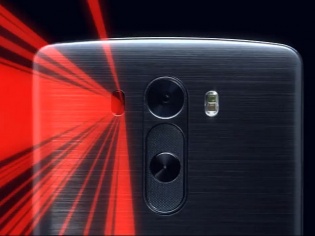-
Chandrakant 'CK' Isi
05th Jun 2014
The Best Camera is the one that’s with you. This is the main reason why smartphone cameras have surpassed standalone cameras in terms of popularity. To be at the top of their game, manufacturers are improving the camera tech at a rapid pace. In the last few years, we witnessed smartphones with a 41 megapixel sensor, OIS (Opitical Image Stabilisation), and powerful Xenon flash. However, most smartphones camera’s still have a lot of limitations and drawbacks. For instance, phone cameras are relatively slower to lock focus when compared to proper snappers. While un-optimised software partly takes the blame, the ‘Contrast Detection’ focusing method is a culprit too.
In this focusing system, the lens measures contrast within a sensor field. System adjusts the focus until the maximum contrast is detected. The time required to achieve the desired contrast depends on the situation. So in case of low-light or moving objects, focusing can take a lot of time. To overcome this issue, Samsung used 'Phase Detection' autofocus method in its latest flagship the GALAXY S5. As a result, S5 can focus in 0.3second. To one up its South Korean compatriot, LG has now come with up with the laser-guided autofocus system in its latest flagship smartphone, the G3.
In laser autofocus method, laser beams are fired from the camera assembly. These beams bounce off the objects and come back towards the camera. That's similar to how SONAR (SOund Navigation And Ranging) works. Calculating the return time, the camera figures out how far the objects are. Thanks to these lasers, the G3's camera can lock focus in around 276 milliseconds. At this point, we can’t comment on whether the G3 produces quality images, but one thing for sure that the camera is blazing fast.
You must be thinking that LG mobile’s R&D teams must have spent year to develop this tech right? Well, weird as it may sound, but this system was created to be used on the company’s robotic vacuum cleaners. The idea was to design a more accurate collision detection system for these robot cleaners. However, for some reasons, LG’s home appliance division dropped the idea of using it in cleaner bots. The clever guys at LG’s mobile division sensed the potential in this technology. The team then made required changes to port this technology on their flagship smartphone G3.
The LG G3 is expected to hit the UK and US market sometime in July. We’re hoping that it won’t take much time to reach the Indian shores. Yes, we are looking forward to test this one of a kind smartphone camera. For more information on the G3, head over to this link.
Explained: LG G3’s Laser Auto-Focus Camera | TechTree.com
Explained: LG G3’s Laser Auto-Focus Camera
The breakthrough camera focusing tech has been inspired by LG's vaccuum cleaners.
News Corner
- DRIFE Begins Operations in Namma Bengaluru
- Sevenaire launches ‘NEPTUNE’ – 24W Portable Speaker with RGB LED Lights
- Inbase launches ‘Urban Q1 Pro’ TWS Earbuds with Smart Touch control in India
- Airtel announces Rs 6000 cashback on purchase of smartphones from leading brands
- 78% of Indians are saving to spend during the festive season and 72% will splurge on gadgets & electronics
- 5 Tips For Buying A TV This Festive Season
- Facebook launches its largest creator education program in India
- 5 educational tech toys for young and aspiring engineers
- Mid-range smartphones emerge as customer favourites this festive season, reveals Amazon survey
- COLORFUL Launches Onebot M24A1 AIO PC for Professionals







TECHTREE